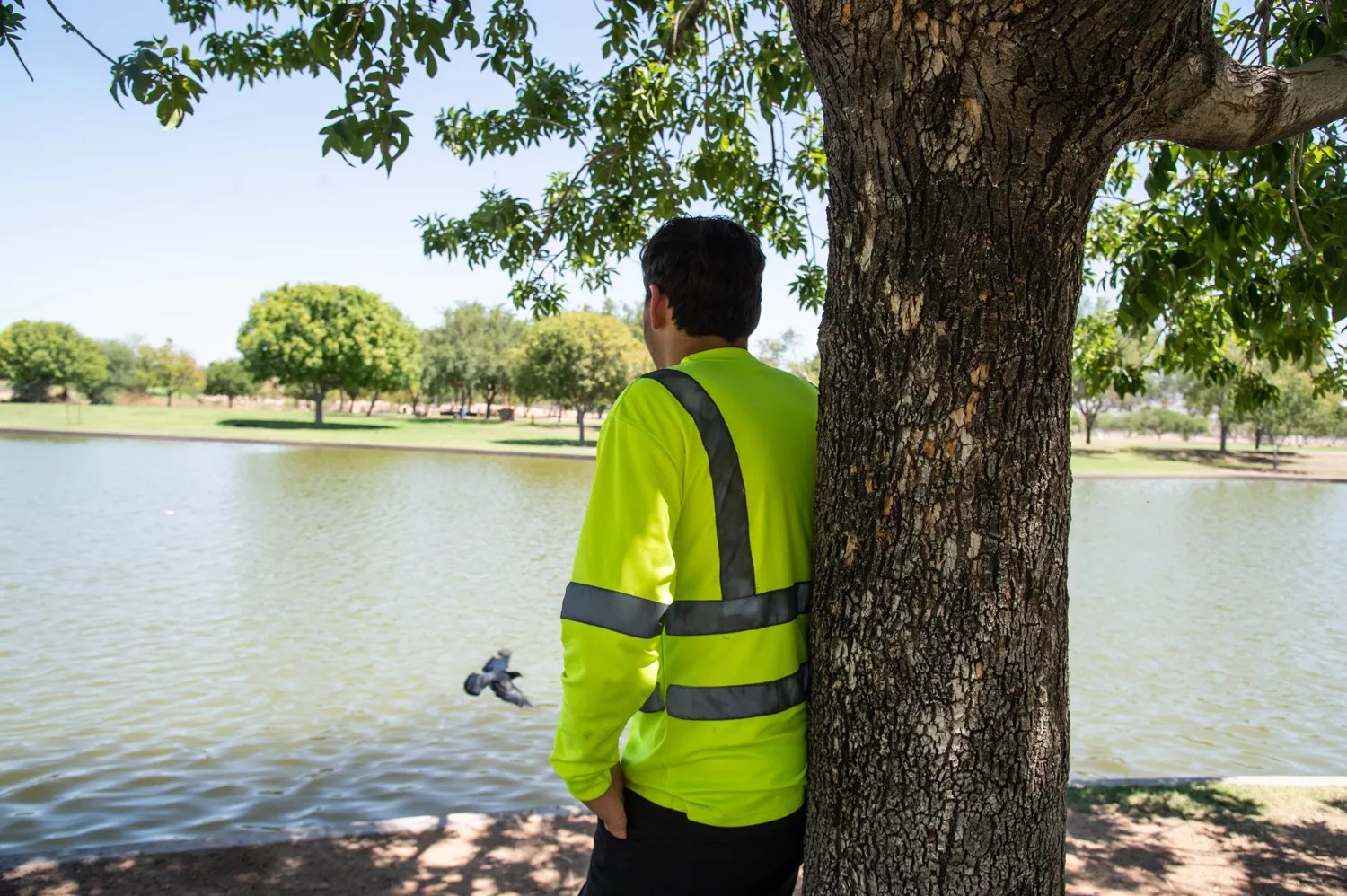
O’Hara Shipe

Audio By Carbonatix
On July 31 at 3:10 p.m., the temperature in Phoenix topped out at 108 degrees Fahrenheit, effectively ending the historic heat wave that gripped the city for 31 consecutive days. But despite a few days of reprieve, where the temperatures dipped below 110, the hellish heat is returning for an encore.
The National Weather Service issued another excessive heat warning on Friday, which will stay in effect until 8 p.m. Monday – for now. According to NWS meteorologist Matthew Hirsch, August could be even hotter than July.
So, what is causing one of the nation’s hottest cities to get even hotter? As it turns out, the answer, in part, is urban sprawl.
Since the 1950s, when air conditioning became affordable, people have been flocking to Phoenix. Now, the city is listed as the nation’s fifth most populous city. While the influx of residents has led to a thriving entertainment district, professional sports teams and the development of an aerospace industry hub, there has been one major pitfall: the increase in concrete infrastructure.
Phoenix, make your New Year’s Resolution Count!
We’re $14,000 away from our End-of-Year campaign goal, with just a five days left! We’re ready to deliver — but we need the resources to do it right. If New Times matters to you, please contribute today to help us expand our current events coverage when it’s needed most.
The addition of carports, roadways and buildings has effectively reduced the amount of green areas in the city while simultaneously creating heat islands.
“We’ve tested it over the years, and it’s pretty consistent that on a hot summer afternoon in Arizona, black asphalt can get [to] 170 to 180 degrees,” Kevin Foster, director of the Arizona Burn Center in Phoenix, told the CBC last month.
In 2010, the city introduced the Tree and Shade Master Plan – an initiative aimed at increasing urban forests and engineered shade by 25% by the year 2030. However, the city is nowhere close to attaining that goal. The plan is the product of the Tree and Shade Task Force and is led by the city’s Parks and Recreation Department.
“Trees are an important part of the plan, which residents have been asking for for years, but they aren’t a cure-all for the city,” David Hondula, director of Phoenix’s Office of Heat Response and Mitigation, told The Guardian in 2022. “But if we could have 30% of a 20-minute walking path shaded, it would provide health protection for most summer days.”
However, even with climate change warnings and predicted heat domes, temperatures in July, and now August, caught many Phoenicians off guard. And the city’s most vulnerable are facing the consequences.
In 2020, Maricopa County reported 323 heat-associated deaths, a 62.3% increase from 2019. By contrast, that’s 15 times the number of heat-related deaths in 2001. Some 53% of those who died from heat-related illness in 2020 were homeless.
This year, there have already been 39 confirmed heat-related deaths in Maricopa County, and another 312 currently are under investigation. At the same time last year, there were 42 confirmed heat-related deaths in the County, with another 282 under investigation. It is not yet clear how many of the 39 people who died this year were homeless.
For tips on how to keep safe in the heat, visit Maricopa.gov.